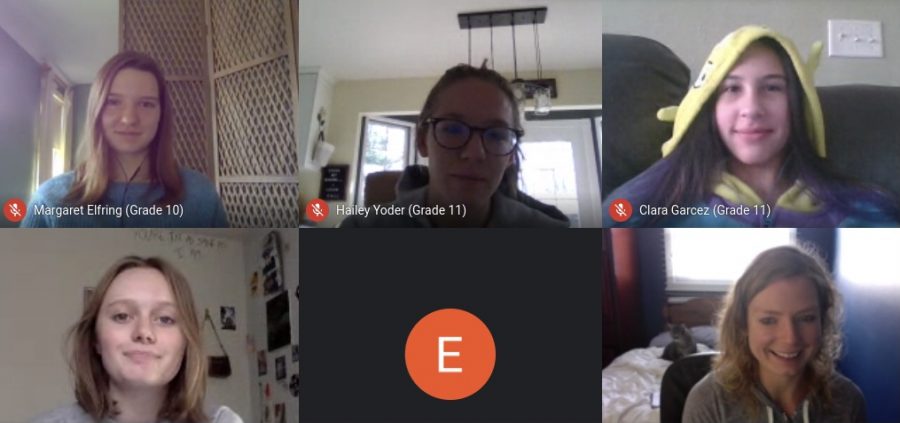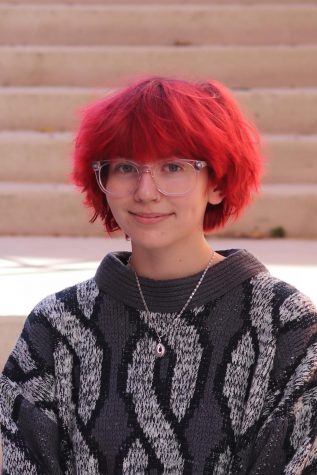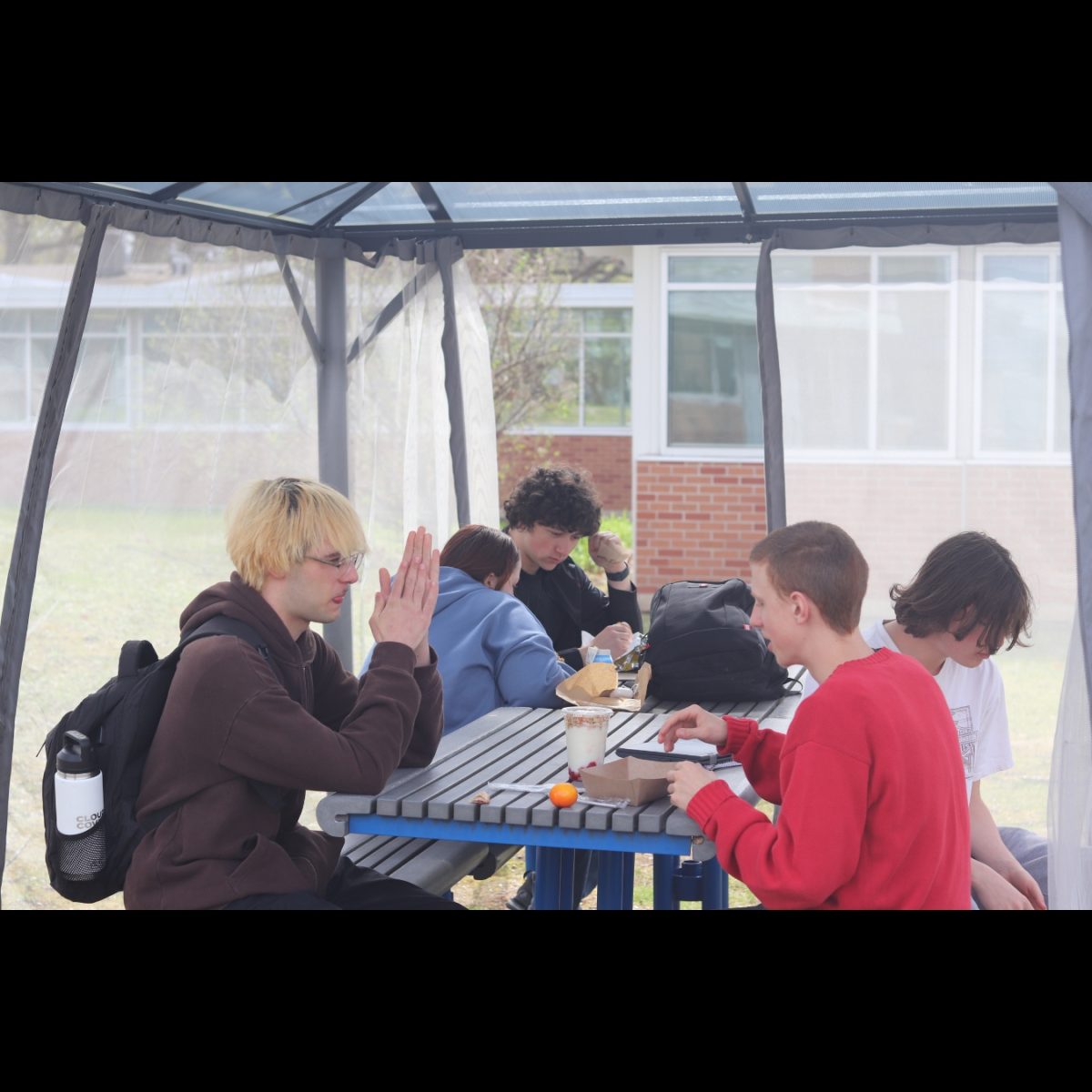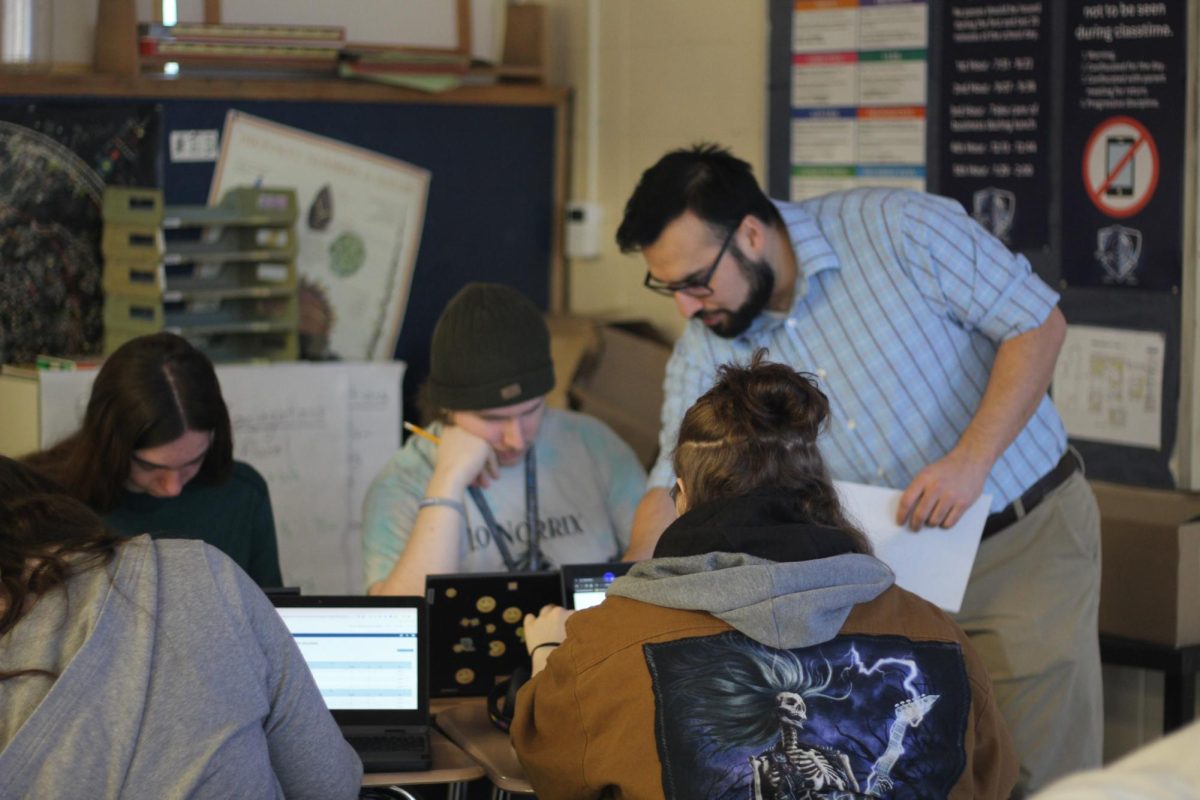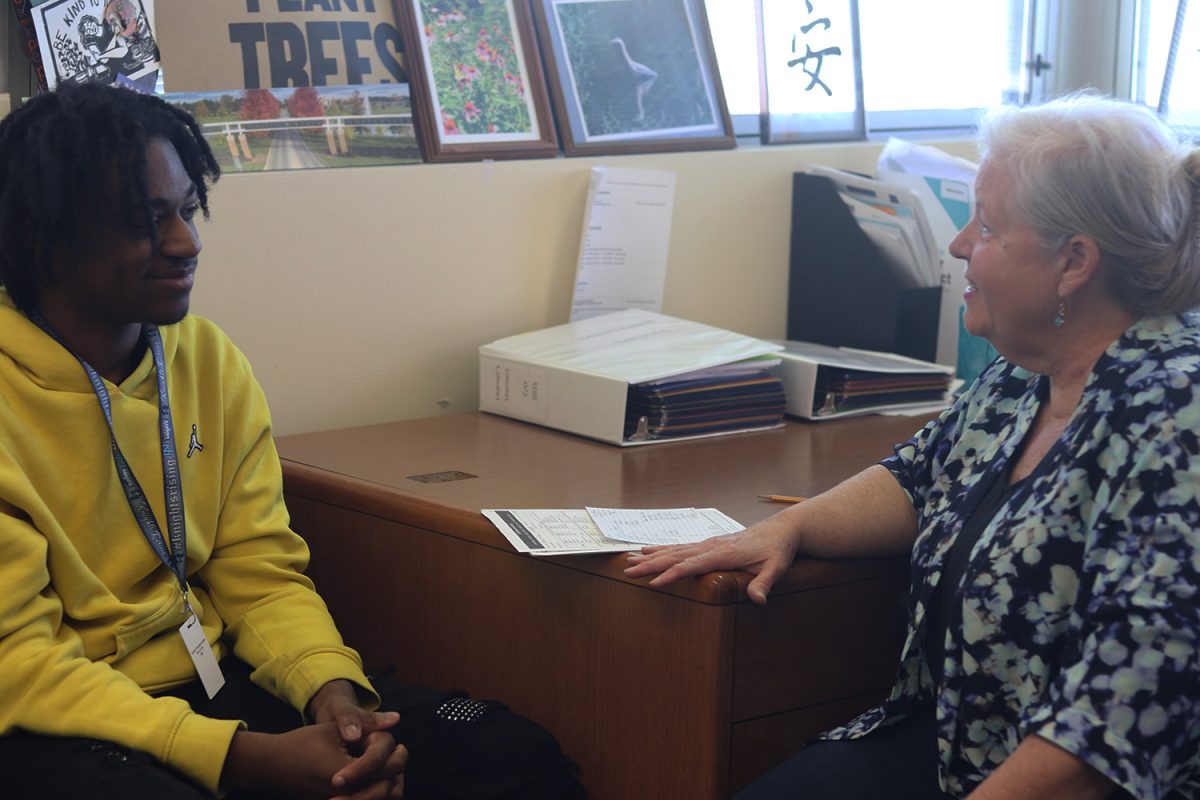Loy Norrix teachers and students alike are benefitting from SEL
Credit: Milo Turner
Participants, (pictured top left to bottom right) Margaret Elfring, Hailey Yoder, Clara Garcez, Claire Knudsen, and Brianna English during the November 18 session of SEL. The theme of this session was gratitude.
December 2, 2020
Objectively, online schooling can be a primary stressor in the life of a student in 2020, the Google Classroom icon feeling like yet another weight on your shoulders.
Being physically isolated from your loved ones can make you feel emotionally closed-off, an outlet ripped away by the ongoing flow of confirmed COVID-19 cases. However, Loy Norrix students and staff are finding solace every Wednesday through shared Social-Emotional Learning sessions, the goal of which, according to the Kalamazoo Public Schools website, is to increase self-awareness, self-management, social awareness, and other important skills.
Beginning on the first Wednesday of the 2020 school year, students were given the opportunity to attend Social-Emotional Learning, also known as SEL sessions, with their designated second hour teachers.
Since then, many have continued to attend these sessions weekly from either 9:00 to 10:00 or 10:15 to 11:15 a.m.
The anatomy of an SEL hour is consistent for every session according to Loy Norrix teacher Brianna English, who facilitates an AP English Language group every week.
“During SEL, we always do a guided meditation, check in on the mood meter, and then do a lesson,” said English. “The lesson is different every week, some topics we’ve covered have been smart decision making, having empathy, and goal setting. Usually I end the SEL session with a cute or fun video or a game so that students leave happy and relaxed.”
Junior Clara Garcez, attends these sessions regularly and is familiar with the mood meter mentioned.
Garcez explained, “We place ourselves on a four-quadrant mood meter that measures energy level and pleasantness. If people feel like sharing, then they are free to.”
As the concept suggests, participants have been aided socially and emotionally by attending these extra periods dedicated to support and checking-in.
Sophomore Margaret Elfring has been attending sessions regularly, as well.
“I’m used to chatting with people in between classes or after finishing work even if I’m not super close to them, but that doesn’t happen this year,” Elfring pointed out.
Elfring admits, “At first I didn’t like the idea of SEL because I thought they would be full of bad videos talking about how we should be ‘in touch with our feelings.’ Instead, it’s been a low stress, low pressure environment with people who are all going through similar things.”
Junior Sagan Barber, feels similarly about the group therapy of SEL.
“It’s a nice break from the stress of, well, everything. I get to talk and interact with people in a way that I haven’t really gotten to in any other way online,” said Barber.
But students haven’t been the only individuals able to benefit from talking about how the week has been, how they’re feeling and any other miscellaneous current events.
English explained, “I have benefited from teaching them [SEL sessions] primarily in that I’ve gotten to know the students who come to SEL much better than those who don’t. The thing I miss most about in-person teaching is building relationships with my students and getting to know their personalities, not just their academics, and SEL allows me to do that.”
Garcez agreed, “I think one of the ways that teachers have benefited from SEL is that they get to know their students better and really connect with them. That can be someone talking about how they feel or even just laughing at silly jokes.”
The turnout for each session is sizable as well for English´s sessions. About one third of the total second hour class attends each session.
On whether or not facilitating sessions has felt like a burden this trimester, English said, “Actually teaching the sessions does not feel like a burden. On the contrary, I really enjoy the time to get to know my students on a more personal level.” English added, “However, planning for the sessions does add an extra responsibility to my teaching load, which is already bigger this year with having to transition all of my regular lessons to a digital format.”
Barber reports that students use these words when describing they feel post-SEL and said, “Refreshed, inspired, collected.” Garcez reports words like: “relieved, relaxed, ready for the day.”
The optional nature and overall open, laid-back vibe that SEL sessions have created are seemingly producing positive results in students, mentally and emotionally. Participants hope that this Wednesday-morning tradition will carry on.


